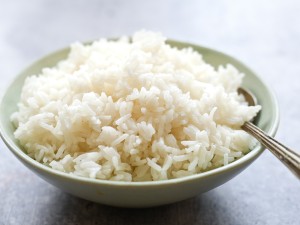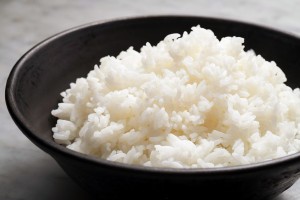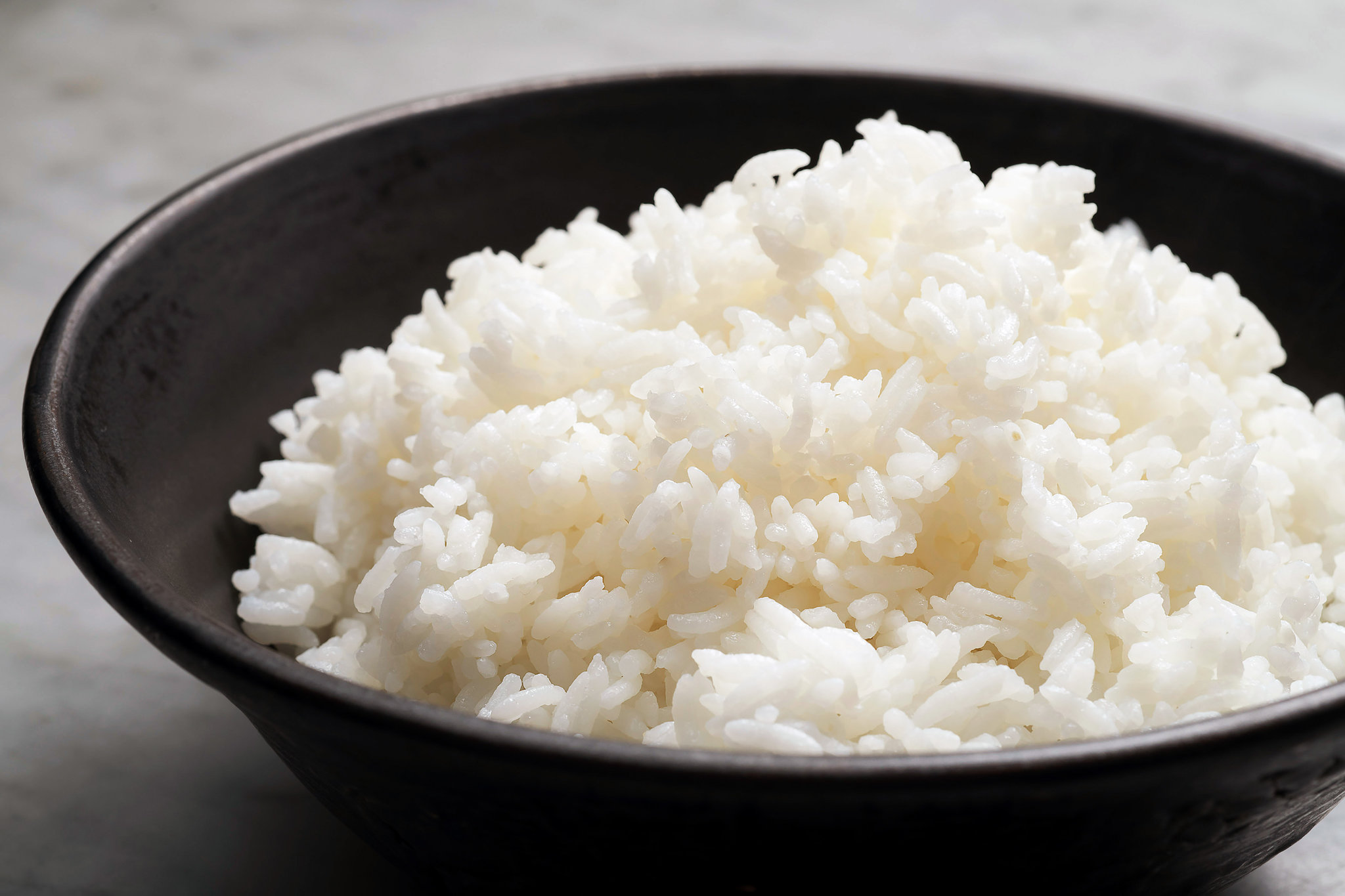What Happens to Your Body When You Eat Rice Every Day
Just like bread and pasta, rice is often vilified by keto devotees and low-carb lovers. Not only are those who steer clear of rice missing out on some serious health benefits (more on that shortly), but they’re also stigmatizing members of nearly all cultures of the world.

The USDA’s Economic Research Service reports that more than half of the global population relies on grain to make up the bulk of their diets. For reference, according to the nonprofit industry group USA Rice, the average resident of Asia consumes an average of 300 pounds of rice per year. In the United Arab Emirates, that figure is around 450 pounds per year, and here stateside, Americans eat approximately 27 pounds annually.
“Rice can be such an affordable and convenient carbohydrate, and we should stop demonizing it and instead help people understand how best to consume it. Rice can absolutely be a part of a healthy diet,” says Laura Ligos, RDN, CSSD, a registered dietitian nutritionist and the founder of The Sassy Dietitian in Albany, New York.
“Rice can be such an affordable and convenient carbohydrate, and we should stop demonizing it and instead help people understand how best to consume it. Rice can absolutely be a part of a healthy diet,” says Laura Ligos, RDN, CSSD, a registered dietitian nutritionist and the founder of The Sassy Dietitian in Albany, New York.
You’ll Get an Energy Boost
“Rice is a healthy, nutrient-dense grain that’s an excellent source of carbohydrates, which is one of the three major macronutrients we need to consume daily,” Ehsani says, pointing to fat and protein as the other parts of the powerful trio. That’s right: Your body needs carbs to survive. Depending on which governmental organization you tap into and your personal health status, carbohydrate recommendations may vary. The 2020-2025 Dietary Guidelines for Americans suggest that carbs should constitute about 40% to 65% of your daily calories. “Carbohydrates provide our bodies with fuel, aka energy, we need each day,” says Ehsani.
Rice is a quick source of energy, Ligos adds, which can be a big win for those who need to power up fast, such as athletes, individuals with labor-intensive jobs and those who are pregnant, nursing or healing from an injury or illness.
“Carbs are an important macronutrient that our bodies need for energy, hormone production, cognitive function and so much more,” Ligos says.
You Might Notice Smoother Digestion
Along with bananas, applesauce and toast, rice is a signature component of the “BRAT diet” that’s often promoted for those who are dealing with or recovering from nausea, vomiting or diarrhea.
“If you’ve ever had a stomachache or stomach bug, one food you may think of that’s easy to tolerate and digest is plain rice. There’s very little fat in rice too, which is ideal for ease of digestion,” Ehsani says.
This can be helpful whether you have digestive issues or not, Ligos adds. Having an easy-to-digest carbohydrate can be helpful if you are experiencing a wonky stomach due to anxiety or stress, if you are bouncing back from an illness, or for pre-or post-workout.
You Can Mix Up Your Micronutrients
Depending on the type of rice you are choosing, it has different health benefits, Ehsani says.
“Rice provides more than 15 essential vitamins and minerals, including folic acid, B vitamins, potassium, magnesium, selenium, fiber, iron and zinc,” says Lauren Harris-Pincus, M.S., RDN, founder of NutritionStarringYOU.com and author of The Everything Easy Pre-Diabetes Cookbook. “For example, white and brown rice share a somewhat similar nutrition profile, although brown rice is slightly higher in calories, fiber, protein, manganese, selenium, magnesium and B vitamins. Wild rice and black rice, also known as forbidden rice, are higher in antioxidants and lower in calories, with a lower glycemic index.”
For a mix of micronutrients and flavors, try to integrate more than one variety of rice into your diet on a regular basis.
Your Blood Sugar Might Spike
Due to its higher proportion of carbs (compared to protein and fat, the two other macros), a serving of rice on its own can spike blood sugar levels. The glycemic index is a measure of how much food impacts blood sugar, and rice falls at about the middle; above corn, just below wheat and slightly lower than white potatoes, per Harvard Medical School.
“If you are not active or do not eat enough protein and fats to go along with rice, it may impact your blood sugar in a negative manner,” if you’re trying to keep it even-keeled, Ligos says. Since even a mere two minutes of walking after meals can lower post-meal blood sugar, she says, “It can also be helpful to eat rice around your most active time of day, especially if you are struggling with some blood sugar balance. That can look like having some rice—plus protein and fat—pre-workout or before a walk or after your workout.”
Pre-workout or otherwise, Ehsani recommends bolstering your rice recipe with vegetables for more fiber and adding a high-quality source of protein, like fish, chicken, tofu or hard-boiled eggs, for longer-lasting energy.
For slower digestion, Harris-Pincus has a simple hack: Both white and brown rice are significant sources of resistant starch, she says, “especially when allowed to cool after cooking and prior to consumption. Resistant starch has shown real promise in promoting fullness and a healthy body weight.” (Translation: Meal-prep your next batch of rice a day or two in advance, and enjoy those leftovers reheated—you may digest them at a less rapid clip.)
You Might Increase Your Arsenic Consumption
Compared to other grains, rice can be a higher source of arsenic, a chemical compound that’s naturally in our soil and water in some parts of the world, Ligos says—and the Dartmouth Toxic Metals Superfund Research Program verifies. The World Health Organization says arsenic exposure can be linked to increased cancer risk over time. To limit your arsenic consumption:
- Choose rice grown in areas that produce rice that’s lower in arsenic. White basmati from India, Pakistan and California fits the bill, as does sushi rice from the U.S.
- Wash rice before cooking and consuming it.
- Mix up your grains; other options like quinoa, bulgur, farro and amaranth tend to be lower in arsenic.


